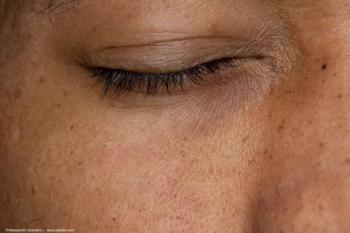
Daily use of 650-nm low-level red light for 1 year slowed progression of SER and AL
Red light has been receiving increased attention as a potential candidate to combat myopia. The daily use of 650-nm low-level red light for 1 year slowed the progression of spherical equivalent error and axial length without safety concerns.
Investigators from the Beijing Institute of Ophthalmology, and the Beijing Tongren Eye Center, Beijing Tongren Hospital, Capital Medical University, Beijing, China, reported that daily use of 650-nm low-level red light for 1 year slowed the progression of spherical equivalent error (SER) and axial length (AL) without safety concerns.1
Kai Cao, MM, and colleagues, emphasized that treatments are needed to slow the progression of or reduce the incidence of myopia, and low-level red light has been receiving increased attention as a potential candidate to combat myopia. This technology works, they explained, by concentrating a specific band of light, typically 650 nm, into a laser beam to irradiate the retina.2-7
The researchers undertook a single-masked, randomized clinical trial at 1 site in which then included children from 6 to 12 years of age, all of whom had an SER of -6 to 3 diopters (D). The children’s baseline measurements were collected from August to September 2021.
All children either underwent 3-minute twice-daily irradiation sessions during which they were treated with 650-nm low-level red light 4 or more hours apart or received no intervention. The primary outcomes were the changes in the cycloplegic SER and axial length (AL) at 6- and 12-months. The safety of the treatment was assessed on masked fundus photographs.
Effects of red light
The 336 children were divided evenly between the 2 groups. The mean patient age, SER, and AL were, respectively, 9.0 years, -1.3 D, and 23.8 mm for all patients.
A minimal number of participants were lost to follow-up: 95.8% in the treated group and 94.6% in the untreated group returned for the 6-month follow-up; the respective numbers returning for the 12-month examination were 93.5% and 90.5%.
The authors reported that the mean change in SER was almost 1 diopter more myopic, and about a third of a millimeter greater AL in the untreated group compared with the group treated with red light. No changes in the retina were seen in the fundus photographs in either group.
The authors concluded, “These findings suggest that daily use of 650-nm low-level red light for 1 year can slow progression of SER and AL without safety concerns identified. Confirmation of these findings at independent sites seems warranted, as well as determining whether these effects can be sustained with or without continued treatment and whether low-level red light has any effect on pathological myopia.”
References:
Cao K, Tian L, Ma D-L, et al. Daily low-level red light for spherical equivalent error and axial length in children with myopia: a randomized clinical trial. JAMA Ophthalmol. Published online April 25, 2024. doi:10.1001/jamaophthalmol.2024.0801
Jiang Y, Zhu Z, Tan X, et al. Effect of repeated low-level red-light therapy for myopia control in children: a multicenter randomized controlled trial. Ophthalmology. 2022;129:509-519. doi:10.1016/j.ophtha.2021.11.023
Tian L, Cao K, Ma DL, et al. Investigation of the efficacy and safety of 650 nm low-level red light for myopia control in children: a randomized controlled trial. Ophthalmol Ther. 2022;11:2259-2270. doi:10.1007/s40123-022-00585-w
Xiong R, Zhu Z, Jiang Y, et al.Longitudinal changes and predictive value of choroidal thickness for myopia control after repeated low-level red-light therapy. Ophthalmology. 2023;130:286-296. doi:10.1016/j.ophtha.2022.10.002
Zhou L, Xing C, Qiang W, Hua C, Tong L. Low-intensity, long-wavelength red light slows the progression of myopia in children: an Eastern China-based cohort. Ophthalmic Physiol Opt. 2022;42:335-344. doi:10.1111/opo.12939
Dong J, Zhu Z, Xu H, He M. Myopia control effect of repeated low-level red-light therapy in Chinese children: a randomized, double-blind, controlled clinical trial. Ophthalmology. 2023;130:198-204. doi:10.1016/j.ophtha.2022.08.024
Xiong R, Zhu Z, Jiang Y, et al. Sustained and rebound effect of repeated low-level red-light therapy on myopia control: a 2-year post-trial follow-up study. Clin Exp Ophthalmol. 2022;50:1013-1024. doi:10.1111/ceo.14149
Newsletter
Don’t miss out—get Ophthalmology Times updates on the latest clinical advancements and expert interviews, straight to your inbox.


















































.png)


